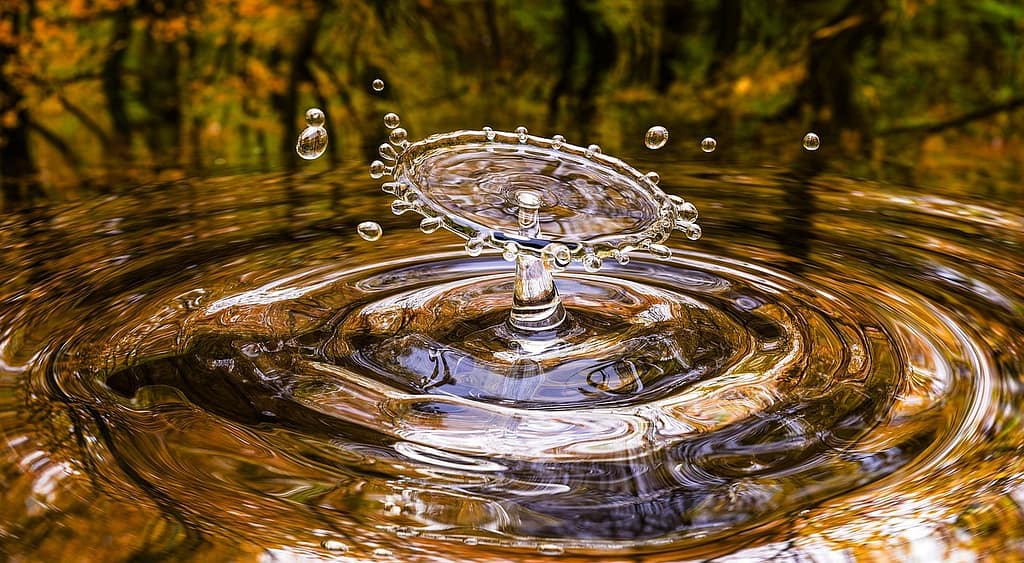Introduction
Imagine standing on the edge of a rugged coastline, the wind whipping through your hair, and the sound of crashing waves filling your ears. Off in the distance, you see a towering column of rock rising from the sea, seemingly defying the relentless forces of nature. This awe-inspiring formation is known as a sea stacks, a true marvel of coastal geology and a crucial component of marine ecosystems.
Sea stacks are more than just stunning natural sculptures; they play a significant role in the health and biodiversity of our oceans. In this article, we’ll dive deep into the world of sea stacks, exploring their formation, ecological importance, and the challenges they face. By the end, you’ll have a newfound appreciation for these coastal sentinels and the vital ecosystems they support.
Understanding Sea Stacks
Definition and Description
A sea stack is a steep, isolated column of rock that stands in the sea near a coast. These striking formations are remnants of headlands that have been eroded by the relentless forces of wind and waves over thousands or even millions of years. Famous examples include the Twelve Apostles in Australia, the Old Man of Hoy in Scotland, and Ball’s Pyramid in Australia.
Sea stacks vary in shape and size, but they all share a common origin: the natural processes of erosion and weathering. Their dramatic appearance often makes them popular landmarks and tourist attractions, drawing visitors from around the world to marvel at their beauty and the raw power of nature.

Formation Process
The formation of sea stacks is a fascinating geological process that involves several stages:
- Headland Formation: The journey begins with the formation of a headland, a high, narrow piece of land that juts out into the sea. Headlands are typically composed of more resistant rock types, such as granite or limestone, which can withstand the erosive forces of the ocean better than the surrounding rock.
- Wave Erosion: Over time, waves continually crash against the headland, gradually wearing away the softer rock and carving out features such as sea caves and arches. This process is known as wave erosion and is driven by the constant motion of water and the abrasive action of sediment carried by the waves.
- Cave and Arch Formation: As the waves erode the headland, they create sea caves, which can eventually become sea arches when the cave walls are breached, allowing water to flow through. These arches are temporary structures that will eventually collapse due to the relentless erosion.
- Collapse and Stack Formation: When a sea arch collapses, it leaves behind isolated pillars of rock known as sea stack. These stacks continue to be shaped by the forces of erosion, gradually becoming more slender and precarious over time.
This dynamic process of erosion and weathering not only shapes the landscape but also creates unique habitats for a variety of marine organisms.
Ecological Significance of Sea Stacks
Habitat for Marine Life
Sea stacks are more than just geological curiosities; they provide critical habitats for a diverse array of marine life. The nooks and crannies of these rocky outcrops offer shelter and breeding grounds for numerous species, making sea stacks important ecological havens.
- Birds: Many sea stacks serve as nesting sites for seabirds such as puffins, gulls, and cormorants. The isolated nature of these stacks offers protection from terrestrial predators, creating safe environments for raising chicks. The towering heights of the stacks also provide excellent vantage points for spotting prey in the surrounding waters.
- Marine Invertebrates: The submerged portions of sea stacks are home to a rich tapestry of marine invertebrates, including barnacles, mussels, and sea anemones. These organisms cling to the rock surfaces, benefiting from the nutrient-rich waters and the constant influx of food particles brought in by the waves.
- Fish: The waters around sea stacks are often teeming with fish, drawn by the abundance of food and the complex underwater terrain. Species such as wrasse, cod, and bass find refuge among the rocky crevices and kelp forests that thrive in the nutrient-rich environment.
Biodiversity Hotspots
Sea stacks are often biodiversity hotspots, supporting a wide range of species within a relatively small area. The unique combination of terrestrial and marine environments creates a rich tapestry of life, with interactions between different species adding to the overall complexity and resilience of the ecosystem.
- Terrestrial-Marine Interface: The interface between land and sea is a dynamic and productive zone. Sea stack contribute to this productivity by providing habitats that support both terrestrial and marine organisms. For example, seabirds nesting on sea stacks rely on marine fish for food, creating a direct link between the health of the marine ecosystem and the success of terrestrial species.
- Microhabitats: The varied microhabitats found on sea stacks—ranging from sunlit rock surfaces to shaded crevices and tide pools—support a diverse array of organisms. Each microhabitat offers different conditions in terms of temperature, moisture, and exposure to waves, allowing a wide range of species to coexist.
Sea Stacks as Indicators of Environmental Health
Monitoring Marine Ecosystems
Sea stacks can serve as valuable indicators of the overall health of marine ecosystems. Scientists use these formations to monitor environmental changes and assess the impacts of human activities and natural phenomena on coastal and marine environments.
- Baseline Data: By studying the species composition and abundance on and around sea stacks, researchers can establish baseline data that can be used to detect changes over time. This information is crucial for understanding long-term trends and identifying potential threats to marine biodiversity.
- Ecological Research: Sea stacks offer unique opportunities for ecological research. Their isolated nature allows scientists to study relatively undisturbed ecosystems, providing insights into natural processes and species interactions. Research conducted on sea stacks can inform conservation strategies and contribute to our understanding of broader ecological principles.
Impact of Climate Change
Climate change poses significant challenges to sea stacks and the ecosystems they support. Rising sea levels, increased storm activity, and changing ocean temperatures all have the potential to alter the physical and biological characteristics of sea stacks.
- Erosion and Stability: Higher sea levels and more frequent storms can accelerate the erosion of sea stacks, leading to their eventual collapse. This erosion not only threatens the physical integrity of the stacks but also disrupts the habitats of the species that rely on them.
- Species Distribution: Changes in ocean temperatures and currents can affect the distribution and abundance of marine species. Some organisms may be forced to move to new areas in search of suitable conditions, while others may face increased competition or predation. These shifts can have cascading effects on the entire ecosystem.
- Adaptation and Resilience: Understanding how sea stacks and their associated ecosystems respond to climate change is essential for developing effective conservation strategies. By studying the adaptive capacity and resilience of these ecosystems, scientists can identify key factors that support their survival and devise measures to enhance their ability to cope with environmental stressors.

Human Interaction with Sea Stacks
Tourism and Recreation
Sea stacks are popular destinations for tourists and outdoor enthusiasts, drawn by their dramatic beauty and the sense of adventure they inspire. However, the influx of visitors can have both positive and negative impacts on the marine ecosystems associated with sea stacks.
- Economic Benefits: Tourism can bring economic benefits to coastal communities, creating jobs and supporting local businesses. Sustainable tourism practices that promote environmental awareness and conservation can help ensure that these benefits are long-lasting.
- Environmental Impact: The increase in human activity around sea stacks can lead to habitat disturbance, pollution, and wildlife displacement. Trampling of vegetation, littering, and the collection of marine organisms as souvenirs can degrade the natural environment and threaten the survival of local species.
Conservation Efforts
Efforts to protect sea stacks and their surrounding environments are crucial for preserving their ecological value and ensuring their continued existence.
- Protected Areas: Establishing marine protected areas (MPAs) that include sea stacks can help safeguard these ecosystems from harmful activities. MPAs provide a framework for managing human impacts, promoting sustainable use, and conserving biodiversity.
- Research and Monitoring: Continued research and monitoring are essential for understanding the health of sea stack ecosystems and identifying emerging threats. Collaboration between scientists, conservation organizations, and local communities can enhance our ability to protect these vital habitats.
- Public Education: Raising awareness about the importance of sea stacks and the challenges they face is key to garnering support for conservation efforts. Educational programs, interpretive signage, and community outreach initiatives can inspire people to appreciate and protect these unique natural features.
Case Studies
Case Study 1: The Twelve Apostles, Australia
The Twelve Apostles, located along the Great Ocean Road in Victoria, Australia, are among the most iconic sea stacks in the world. These limestone stacks rise dramatically from the Southern Ocean, attracting millions of visitors each year.
Ecological Significance: The Twelve Apostles provide habitats for a variety of marine species, including seabirds, fish, and invertebrates. The nutrient-rich waters around the stacks support diverse marine communities, making the area a hotspot for biodiversity.
Tourism and Conservation: While tourism is a major economic driver for the region, it also presents challenges for conservation. Efforts to balance tourism with environmental protection include the establishment of viewing platforms, boardwalks, and educational programs to minimize human impact on the fragile coastal environment.
Case Study 2: The Old Man of Hoy, Scotland
The Old Man of Hoy is a striking sea stack located off the coast of Orkney, Scotland. Standing at 137 meters (449 feet), it is one of the tallest sea stacks in the UK and a popular destination for climbers and hikers.
Ecological Importance: The Old Man of Hoy supports a variety of seabirds, including puffins, guillemots, and razorbills. The surrounding waters are rich in marine life, providing feeding grounds for these birds and contributing to the overall health of the marine ecosystem.
Conservation and Research: Conservation efforts focus on protecting the nesting sites of seabirds and preserving the natural beauty of the area. Ongoing research aims to monitor the impacts of climate change and human activities on the stack and its associated ecosystems.
The Future of Sea Stacks and Marine Ecosystems
Threats and Challenges
Sea stacks and their ecosystems face numerous threats, many of which are exacerbated by human activities and climate change.
- Rising Sea Levels: Higher sea levels can increase the rate of erosion, threatening the stability of sea stacks and the habitats they support. Coastal flooding and storm surges can also impact nearby communities and infrastructure.
- Increased Storm Activity: More frequent and intense storms can accelerate the erosion of sea stacks and disrupt marine ecosystems. The physical forces generated by storms can damage habitats, displace species, and alter the structure of the seafloor.
- Pollution and Human Impact: Pollution from plastic waste, oil spills, and chemical runoff can degrade the quality of marine habitats around sea stacks. Human activities such as overfishing, coastal development, and recreational use can also have detrimental effects on these ecosystems.
Sustainable Practices
Implementing sustainable practices is essential for balancing human activities with the preservation of sea stacks and their ecosystems.
- Responsible Tourism: Promoting responsible tourism practices, such as minimizing waste, respecting wildlife, and following designated trails, can help reduce the environmental impact of visitors. Eco-friendly initiatives and sustainable tourism certifications can encourage businesses and tourists to prioritize conservation.
- Community Involvement: Engaging local communities in conservation efforts is crucial for ensuring the long-term protection of sea stacks. Community-led initiatives, citizen science programs, and collaborative management approaches can empower residents to take an active role in preserving their natural heritage.
- Climate Action: Addressing the root causes of climate change through mitigation and adaptation strategies is essential for safeguarding sea stacks and marine ecosystems. Reducing greenhouse gas emissions, protecting coastal habitats, and enhancing ecosystem resilience can help mitigate the impacts of climate change.

Conclusion
Sea stacks are not only geological wonders but also vital components of marine ecosystems. Their unique structures provide habitats for a diverse array of species, contributing to the richness and resilience of coastal environments. However, sea stacks and their ecosystems face significant challenges, including erosion, climate change, and human impact.
By understanding the ecological significance of sea stacks and implementing sustainable practices, we can help protect these natural treasures for future generations. Whether through responsible tourism, conservation efforts, or climate action, we all have a role to play in ensuring the health and longevity of sea stacks and the marine ecosystems they support.
Additional Resources
References
- Clark, J.R., & Edwards, A. (2014). Coastal Geomorphology: An Introduction. Cambridge University Press.
- Jones, N.V., & Wolff, W.J. (2011). Marine Biodiversity: Patterns and Processes. Cambridge University Press.
- Smith, M.J., & Atkinson, R.J.A. (2004). Coastal Ecology and Conservation. Springer.
- Thompson, R.C., Crowe, T.P., & Hawkins, S.J. (2002). Rocky Shores. Oxford University Press.
Further Reading
- “Marine Protected Areas and Sea Stacks: A Conservation Strategy” – Journal of Marine Conservation
- “The Role of Seabirds in Coastal Ecosystems” – Oceanography and Marine Biology: An Annual Review
- “Climate Change and Coastal Erosion: Impacts on Sea Stacks” – Environmental Science & Policy





Pingback: Seafloor Spreading: Definition And Process - Techy Tempest
Pingback: Why Are Whales Mammals Not Fish? - Techy Tempest